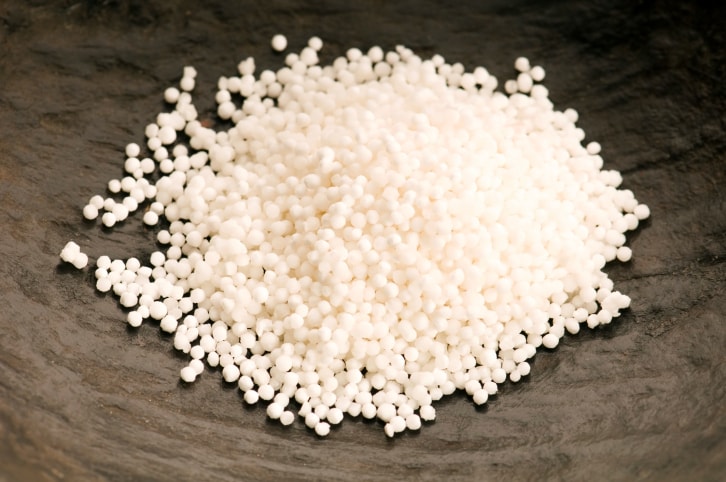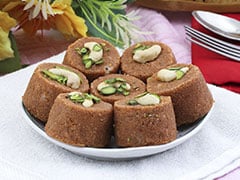Story ProgressBack to home
Tapioca(साबूदाना)
Hindi Name:साबूदाना
Tapioca is a starch extracted from the cassava plant. It is also called as sago or sabudana. It is made by crushing raw tapioca roots in a tank and the juice obtained is stored till it turns into a paste. This paste is then made into small round white balls through a machine.
- NDTV Food
- Nov 21 2014 13:19 IST
 Tapioca is a starch extracted from the cassava plant. It is also called as sago or sabudana. It is made by crushing raw tapioca roots in a tank and the juice obtained is stored till it turns into a paste. This paste is then made into small round white balls through a machine. They are soft, spongy and chewy in taste. The sabudana pearls are easily digestible.
Tapioca is a starch extracted from the cassava plant. It is also called as sago or sabudana. It is made by crushing raw tapioca roots in a tank and the juice obtained is stored till it turns into a paste. This paste is then made into small round white balls through a machine. They are soft, spongy and chewy in taste. The sabudana pearls are easily digestible.
Usage
During the festival of Navratri, people in India cook dishes like sabudana khichdi, kheer or papads. These tiny white pearl like granules are also used to make puddings and bubble tea worldwide. You can even add it in soups or make sabudana vada, which is famous in India. It is a pure source of carbohydrates and gives a quick boost of the much-needed energy during fasts.
Tapioca is a staple food in some regions and is used worldwide as a thickening agent, mainly in foods. Tapioca is gluten-free, and almost completely protein-free.
Tapioca is commonly used instead of wheat flour in South America, the West Indies and India. Bubble Tea, also known as Pearl Milk Tea, is a popular Taiwanese drink. The drink has a tea base with milk or fruits and chewy tapioca pearls. This drink has become quite popular in India too.
The most popular use of tapioca in the Western world is a milk-based dessert pudding with milk and sugar. In the tropics, it is also popular prepared as a pudding with fruit or fruit juice.
Sago powder can be used as a thickening agent in gravy dishes, and sago or tapioca flour can be used to make flat-breads. Sago can be made into vadas and boiled and sun-dried and made into pappadums.
Nutritional Value
1. Sabudana is full of starch or is therefore a very good energizer. It is for this reason that it is mostly consumed as a breakfast item or to break fast in Indian festivals. It is great for a quick boost of energy, and hence often served in India for breaking fasts during religious festivals.
2. It has a cooling effect in the body and is therefore given to people who have excess bile.
3. It is not very high on nutrition because it is basically just starch. It is low in fat and also in protein, does not contain minerals or vitamins. It is for this reason that sabudana is never consumed alone. It is made into savory dishes or consumed with milk.
4. Sago gruel is also great when you're sick because it gives you quick energy and is easy to digest. According to Indian medicine, sago and rice have a cooling effect on the system, hence sago gruel is given if you have excess bile
5. Sabudana does not contain any minerals or vitamins and has very low amounts of calcium, iron, and fiber, it is rich in carbohydrates
Did you know?
It is often referred as the 'poor man's food'. Sabudana is known to have been the main meal of the refugees during World War II.








